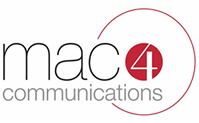
Gallup’s latest State of the Global Workplace report reveals that just 15% of employees worldwide are engaged in their jobs, so it’s not surprising that boosting employee engagement is often a key objective in HR and management initiatives. While launching new employee plans and programs can be beneficial, one simple, quick way to increase engagement is to improve day-to-day communications. Here are four common internal communications mistakes you might be making without even realizing it.
- Communicating across the company without a clear framework – All too often, communications become a game of whisper down the lane. The message is clear and well-understood when it is initially delivered by senior management, but by the time it reaches the front line, the context is missing and the meaning is ambiguous. Communications that cascade through an organization are common and should be supported; employees often prefer to hear news from their direct manager. However, there should be a baseline message that is consistently repeated from one level to the next, as well as a central point of reference (e.g., portal, intranet, social network, etc.) where employees can find the companywide message. Read more: “Ready, Shoot, Aim” – The Importance of Planning What to Say Before You Say It
- Sending boring, robotic messages – There’s no quicker way for an email to end up in the trash than appearing exactly like the email that you sent last week. If you’re sending the same type of email again and again, employees will not feel engaged and most likely won’t read the message. Using a standard template is fine, but mix up the subject lines, write from the employee perspective, and keep emails or other messages brief and to the point. Read more: How to Keep Your Communications Program “Vacation Fresh”—All Year Round
- Not using multiple channels – The more important the message is, the more channels you should use to deliver it. Don’t rely on email every time. Text, portals/intranet, message boards, workplace/social networks and mobile apps are all appropriate channels for employee communication. If possible, allow employees to subscribe to or at least identify their preferred channels. Read more: 6 Reasons to Use Social Media for Employee Communications
- Hitting send/post/publish too quickly – Spelling and grammar mistakes make you look careless and your message seem negligible. Spellcheck does not recognize words that are used incorrectly and Autocorrect can make unintended changes to a mobile post. Proofread and edit all your messages, regardless of length. If the message is high priority, ask a colleague to review it for any errors. Read more: Read the Words, Call the Numbers
Correcting these few common mistakes can quickly transform your employee communications from mind-numbing to engaging. Internal communications play a key role in employee satisfaction, so why not try to make yours as effective as possible?
Author: Estera Hayes

